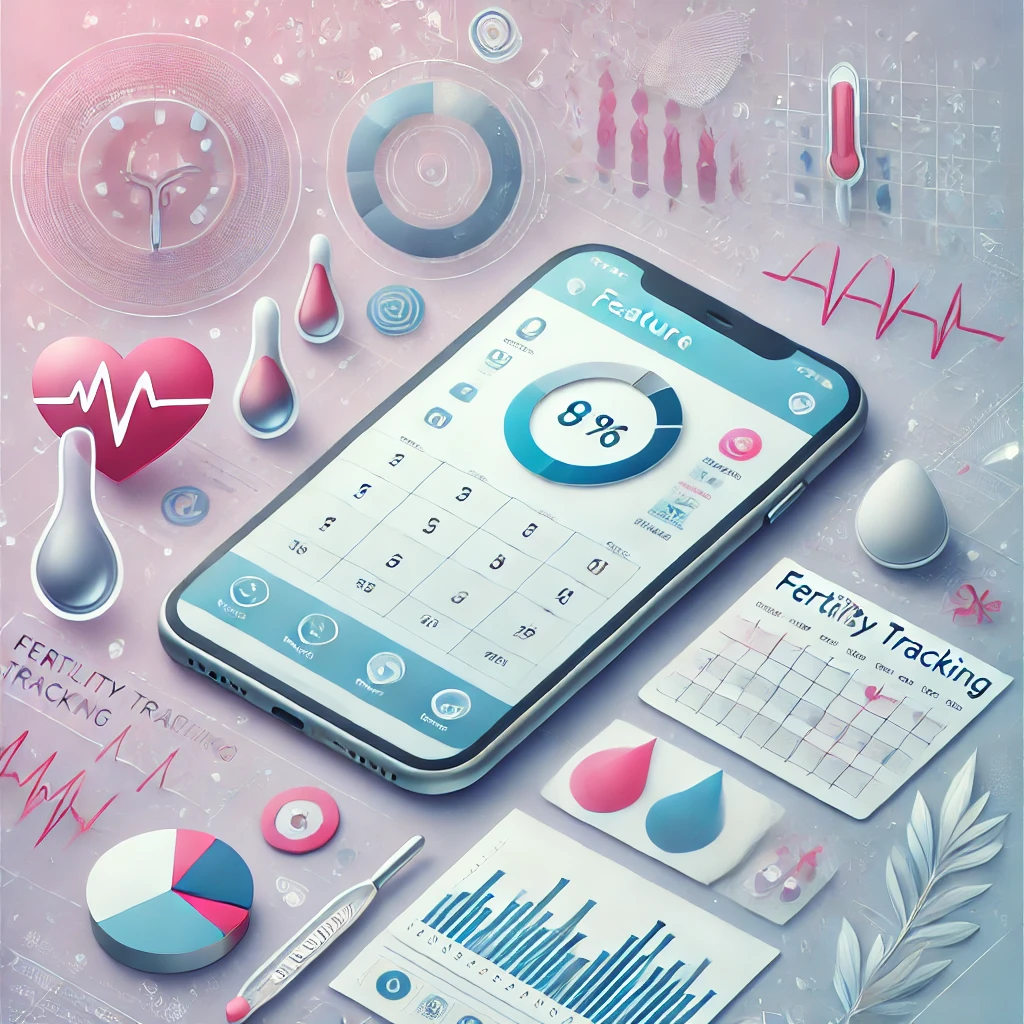Introduction
Women’s health is undergoing a significant transformation, fueled by advancements in technology and an increasing focus on reproductive health awareness. Fertility-tracking apps have emerged as powerful tools that enable women to understand their menstrual cycles, monitor ovulation patterns, and track wellness indicators. According to Persistence Market Research, the global fertility tracking app market is projected to grow substantially, from $81.39 billion in 2024 to $206.34 billion by 2031, with a compound annual growth rate (CAGR) of 14.2%. This surge reflects an increasing awareness of and demand for tools that enhance women’s health autonomy.
Rising Popularity of Fertility Tracking Apps
Several factors contribute to the popularity of fertility-tracking apps. Foremost is the growing demand for personalized healthcare solutions as more women seek ways to manage their reproductive health proactively. By offering tailored insights into menstrual cycles, ovulation timing, and reproductive symptoms, these apps empower users with a deeper understanding of their bodies.
Cultural shifts also play a role. Conversations about reproductive health are becoming more open, leading to reduced stigma and increased interest in apps that support health tracking. The widespread acceptance of discussing topics like menstruation, fertility, and reproductive health challenges encourages more women to explore and utilize these apps.
Technological Advances Driving Market Growth
Technological innovation has significantly boosted the functionality and appeal of fertility-tracking apps. Many of these apps now leverage artificial intelligence (AI) and machine learning, enabling them to make accurate predictions about fertile windows and ovulation. Such precision supports informed decision-making for family planning and reproductive health management.
Wearable technology integration has also expanded the scope of fertility tracking. Many apps sync with devices that track physiological data like heart rate, temperature, and sleep, providing a holistic view of overall health and its impact on fertility. This comprehensive approach increases the app’s value and appeal.
Broad Applications and Diverse User Needs
Fertility tracking apps serve a wide variety of users, extending their appeal beyond women trying to conceive. Some use these tools to understand irregular cycles, manage conditions like polycystic ovary syndrome (PCOS), or track hormonal changes during menopause. This versatility broadens the apps’ user base, making them valuable resources for reproductive health management across different life stages.
In addition to family planning, these apps empower women to track menstrual health and communicate more effectively with healthcare providers, leading to better overall reproductive health outcomes.
Community and Support Features
A noteworthy trend within fertility tracking apps is the emphasis on community and support. Many apps offer features that allow users to connect with others experiencing similar challenges, fostering a supportive environment for sharing insights, advice, and encouragement. This community-oriented approach can be especially beneficial for those navigating fertility challenges, providing both resources and emotional support.
Data Privacy and Regulatory Compliance
As fertility-tracking apps grow in popularity, so do concerns about data privacy and compliance. Given the sensitivity of reproductive health data, app developers must prioritize security and adhere to regulations like HIPAA in the U.S. and GDPR in Europe. Robust data protection policies are essential to build user trust and credibility in a competitive market.
Many reputable apps have responded to these concerns by implementing strong security protocols and transparent privacy policies, giving users control over their data and enhancing trust.
Market Challenges and Growth Opportunities
While the fertility tracking apps market presents vast opportunities, it also faces challenges. The abundance of available apps can make it difficult for users to choose, and varying quality among apps may lead to misinformation or confusion.
To succeed in this crowded field, app developers should prioritize evidence-based information, accurate tracking, and a user-friendly design. Partnering with healthcare professionals to enhance credibility and ensure accurate content is another strategy to improve user satisfaction.
Future Trends in Fertility Tracking Apps
Several emerging trends are likely to shape the future of fertility-tracking apps. One is the integration of telehealth services, which would allow users to consult healthcare providers directly through the app. This feature could offer timely medical advice and further improve user experience.
Expanding educational resources within apps is another promising trend. By providing information on reproductive health, fertility treatments, and wellness practices, apps can empower users to make informed decisions and maximize app benefits.
Conclusion
The fertility tracking app market is undergoing transformative growth, driven by technological advancements, increased awareness of women’s health, and a cultural shift towards open discussions on reproductive health. With projections indicating significant growth, fertility tracking apps are positioned to play an essential role in empowering women to take control of their reproductive health.
As these tools evolve—emphasizing community support, data security, and telehealth features—they will not only deepen women’s understanding of their bodies but also improve access to health resources. Fertility tracking apps are paving the way for a healthier, more informed future in women’s health.



